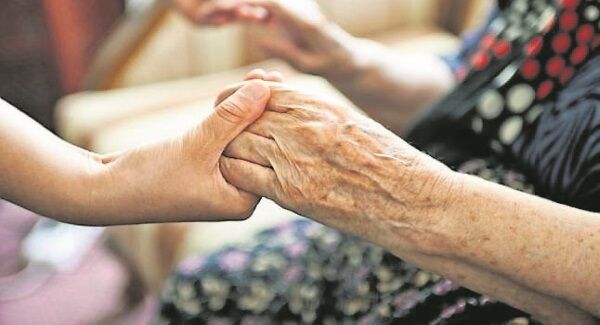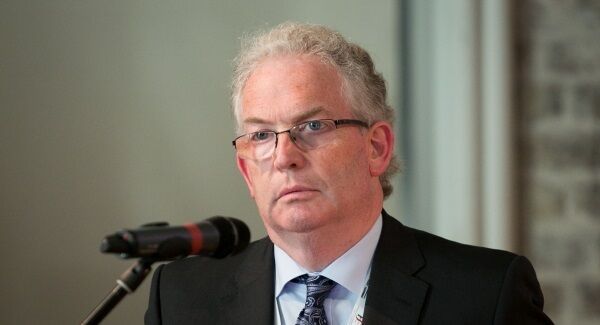CAREERS 2019: Healthcare sector tackles challenges in demographics and workforce


It is hard not to feel sympathy for those in charge of the Irish health service, never mind the frequently stressed individuals out there trying to deliver the many different services on the ground.
The number of people aged over 80 and in greatest need of support is surging, leading to rising demand and an increase in waiting lists.
At the same time, the country’s annual health budget — which now stands at more than €17bn — just keeps moving up.
In its latest report, the Fiscal Advisory Council wrapped the Government over the knuckles for the way in which it has allowed the health budget to overrun by several hundreds of millions, each year.
Consultants are leaving the public hospital system each week to avail of better-remunerated posts either in the private sector, here, or overseas.
As a result, further gaps are opening up in the service, adding to waiting lists and raising the prospect of health complications for the individuals affected.
The problems faced, in this regard, are not confined to this island.
Across the world, populations are ageing fast while many millions each year are moving into the ranks of the middle classes.
The cost of labour in medicine is rising fast, while the bill for increasingly innovative life-prolonging medicines is soaring.
Global healthcare spending is predicted to rise by just over 4% a year over the period, 2017 to 2021, according to consultants Deloitte.
The number of dementia sufferers has risen past the 50 million mark.

In the US, the annual spend on healthcare is expected to reach a staggering $11,350 per person by 2021.
A breakdown in 2016 of the major spending categories in USA is as follows — Hospital care, $1 trillion ($1,000bn); Physicians, $635bn; and Prescription drugs, $328bn.
Our system is somewhat less expensive than that across the Atlantic, but the service is certainly a far cry from those days, 40 or 50 years ago, when much of the service was run by capable nuns.
However, we have benefited from a remarkable surge in life expectancy since then.
However, one result is that we must care for far more elderly people.
This is a highly labour-intensive business.
In Ireland, current spending per head was $5,600 in 2016, almost the same as Germany and slightly ahead of Belgium (which arguably has a better service).
In key areas, we remain under-resourced.

Ireland has 2.9 practising physicians per thousand compared to an OECD average of 3.5.
Ireland has almost 12 practising nurses per thousand compared to an OECD average of nine, but the Irish figures include nurse managers, educators and researchers.
We have three hospital beds per thousand, which compares to an OECD average of 4.7.
This is reflected in exceptionally high occupancy rates — of almost 95% — for acute beds in Ireland.
This can lead to increased issues around infection control.
Employment in the health service is at 120,000.
Demand in the sector for carers and specialists — whether in private or public hospitals and clinics can only grow.
The number of people over the age of 65 is predicted to increase by 60% while those aged over 80 is expected to jump by 90%.
According to the ESRI, demand for GPs is projected to rise by up to 27% in this period with the number of long-term and intermediate care places growing by up to 54%.
The Health Service Capacity Review has suggested that 5,360 extra acute public beds will be required — with an increase of 7,150, if occupancy rates are to be reduced to internationally acceptable rates.

In an interview with the Sunday Business Post, the recently departed HSE director, Tony O’Brien, singled out the immediate need to address the recruitment crisis in healthcare.
By the end of 2016, there were 123,000 employed in what were just over 107,000 ‘whole-time equivalent’ jobs in the HSE.
The private sector has also been expanding in recent years on the back of a recovering economy.
In 2016, the turnover rate across the HSE was 6.5%, but this reached almost 9% in the case of consultants.
A separate challenge is presented by an ageing in the workforce which means that many vacancies will have to be filled for the service to simply stand still.
The average age of the HSE workforce is now 44.6 years while 21% of the total are over fifty-five years of age.
Almost 80% of HSE staff are female - though this falls to 39% in the case of medics.

A global hiring challenge
The depth of the challenge in terms of recruitment is highlighted by a consideration of trends elsewhere in the developed world.
The US expects to add 2.3 million new healthcare jobs in the period from 2017 to 2024.
There are warnings that the US will by 2020 face a serious shortage of both primary care and specialist physicians.
A similar picture emerges for Asia where populations are ageing rapidly while incomes are growing.
Some regions that have supplied healthcare staff to the developed world may be less inclined, or able to do so in the future.
The Americans seem to be ahead of the game when it comes to the use of innovative recruitment technologies.

According to consultants, PwC, the use of data analytics is helping to transform decision making.
Many big healthcare players are using software in the hiring process, such as applicant tracking systems.
There is much greater emphasis now on employer branding.
Hiring is increasingly carried out through social media channels.
Meanwhile, according to talentlift.com, many healthcare staff — working long, unpredictable hours — can’t find the time to research posts that become available.
By utilising social media, healthcare organisations can meet job seekers on the platforms they are already using during their limited free time, creating more chances for engagement.
Instagram has become a favoured channel for social recruiting.
On Instagram, cool visuals are used as promotional tools along with novelty contests.
Referrals are used as a means of sourcing new hires.
The site has some interesting data which may concern managements keen to retain key staff.
While 15% of those surveyed are satisfied with their current job, another 12% are actively seeking alternative posts while a hefty 73% are what is known as ‘passive seekers.’

It is thought that the battle to woo that middle ground may well be stepped up.
This presents employers with a new challenge — how to boost employee loyalty.
This may be less of a challenge in leading teaching hospitals than in other institutions.
Managers need to be more innovative and realistic, in other respects when it comes to addressing the recruitment and retention challenge.
According to the US journalist, Nicole Fuqua: “Too often, HR leaders in organisations only think of potential candidates through a narrow lens.
They focus on the people already at work in the industry. Healthcare organisations need to start focusing on young people considering a career in healthcare.
"They need to start marketing to these candidates earlier than ever before.”
In the US, healthcare organisations have begun to develop ‘community pipelines’ in partnership with high schools and colleges.
They have little choice but to act.
One third of US nurses will reach retirement age in the next ten to 15 years.
Seventy per cent already say that they are burned out in their current job.
More than half rate their stress levels as too high.
Only 56% of nurses would choose the same career if they had their time over again.
Surmounting the recruitment challenge ahead will require not merely innovation in the use of technologies but also a fundamental rethink of staff sourcing, as well as a major rethink of management practices at the heart of organisations.















